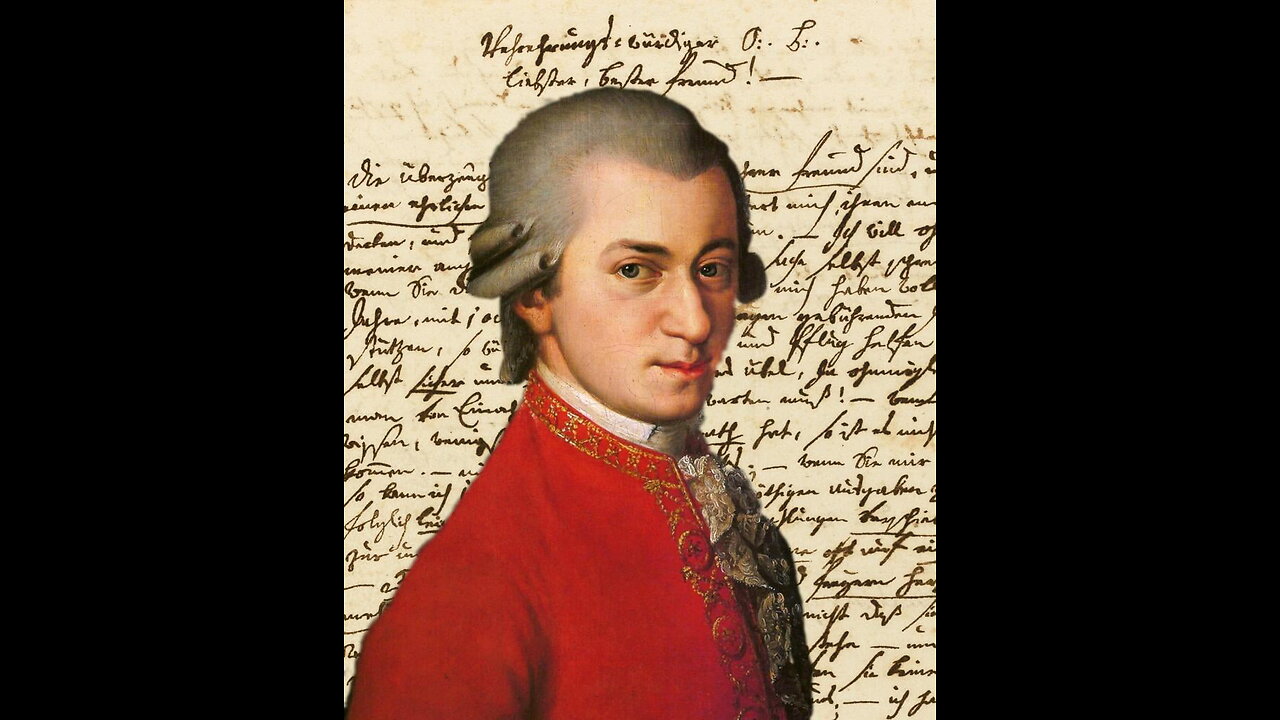Premium Only Content

Requiem in D Minor, K 626, Mozart
Requiem in D Minor, K 626, requiem mass by Wolfgang Amadeus Mozart, left incomplete at his death on December 5, 1791. Until the late 20th century the work was most often heard as it had been completed by Mozart’s student Franz Xaver Süssmayr. Later completions have since been offered, and the most favorably received among these is one by American musicologist Robert D. Levin.
According to a contract that Mozart signed and an attorney witnessed, the requiem was commissioned by Franz, Graf (count) von Walsegg-Stuppach. The count, it seems, pretended to some compositional ability and liked to pass off the work of others as his own. The new requiem, intended as a tribute to the count’s wife, was part of that game. Therefore, he insisted that Mozart was neither to make copies of the score nor to reveal his involvement in it and that the first performance was reserved for the man who commissioned the piece.
At the time, Mozart was deeply engaged with the writing of two operas: The Magic Flute and La clemenza di Tito (“The Clemency of Titus”). Together the three assignments were too much for a man suffering from a succession of debilitating fevers. Most of his failing strength went into the operas, both of which were completed and staged. As for the requiem, he worked on it when strength permitted, and several friends came to his apartment December 4, 1791, to sing through the score-in-progress. Yet his condition worsened, and, by the time of Mozart’s death early the next morning, he had finished only the “Introit.” The “Kyrie,” “Sequence,” and “Offertorium” were sketched out. The last three movements— “Benedictus,” “Agnus Dei,” and “Communio”—remained unwritten, and nearly all the orchestration was incomplete.
Confining musical discussion to those portions of the requiem that are mostly from Mozart’s own mind, the orchestra most often focuses on the strings, with woodwinds featured when greater poignancy is needed and brass and timpani largely relied on for forceful moments. Particularly in the vocal writing, Mozart’s intricate contrapuntal layers show the influence of the Baroque masters J.S. Bach and George Frideric Handel.
Especially in the “Sequence,” Mozart underlines the power of the text by setting prominent trombone passages against the voices: chorus in the “Dies Irae” and soprano, alto, tenor, and bass soloists in the “Tuba Mirum.” It is the most prominent use of the trombone in Mozart’s entire catalog.
Please subscribe to my Substack Channel:
https://juxtaposition1.substack.com/podcast
-
 2:33:06
2:33:06
Rehypothecation1
5 days agoSTAR CHAMBER EPISODE: Erin Valenti, age 33
6672 -
 UPCOMING
UPCOMING
Man in America
6 hours agoOperation Gladio: The CIA, Mossad & City of London’s Plan for a New World Order
4.21K1 -
 LIVE
LIVE
Badlands Media
8 hours agoDEFCON ZERQ Ep. 016
9,255 watching -
 LIVE
LIVE
Inverted World Live
2 hours agoRats Have Learned to Hunt Bats | Ep. 135
1,542 watching -
 2:48:01
2:48:01
TimcastIRL
3 hours agoLIVE Election Coverage: Polling Stations SWATTED, Bomb Threats Called In | Timcast IRL
169K99 -
 LIVE
LIVE
Barry Cunningham
3 hours agoBREAKING NEWS: COUNTDOWN TO COMMUNISM! ELECTION RESULTS SHOW!
1,977 watching -
 LIVE
LIVE
DeVory Darkins
2 hours agoLIVE NOW: 2025 Election results and Exit Polls AMA
869 watching -
 LIVE
LIVE
DLDAfterDark
1 hour agoJust Another Tuesday - In Virginia - The Governor's Race & Glock Talk
81 watching -
 3:21:38
3:21:38
The Charlie Kirk Show
4 hours agoJUDGMENT DAY 2025: The Election Results Stream
143K69 -
 3:51:07
3:51:07
MattMorseTV
5 hours ago $0.69 earned🔴Election Day LIVE COVERAGE.🔴
67.2K38